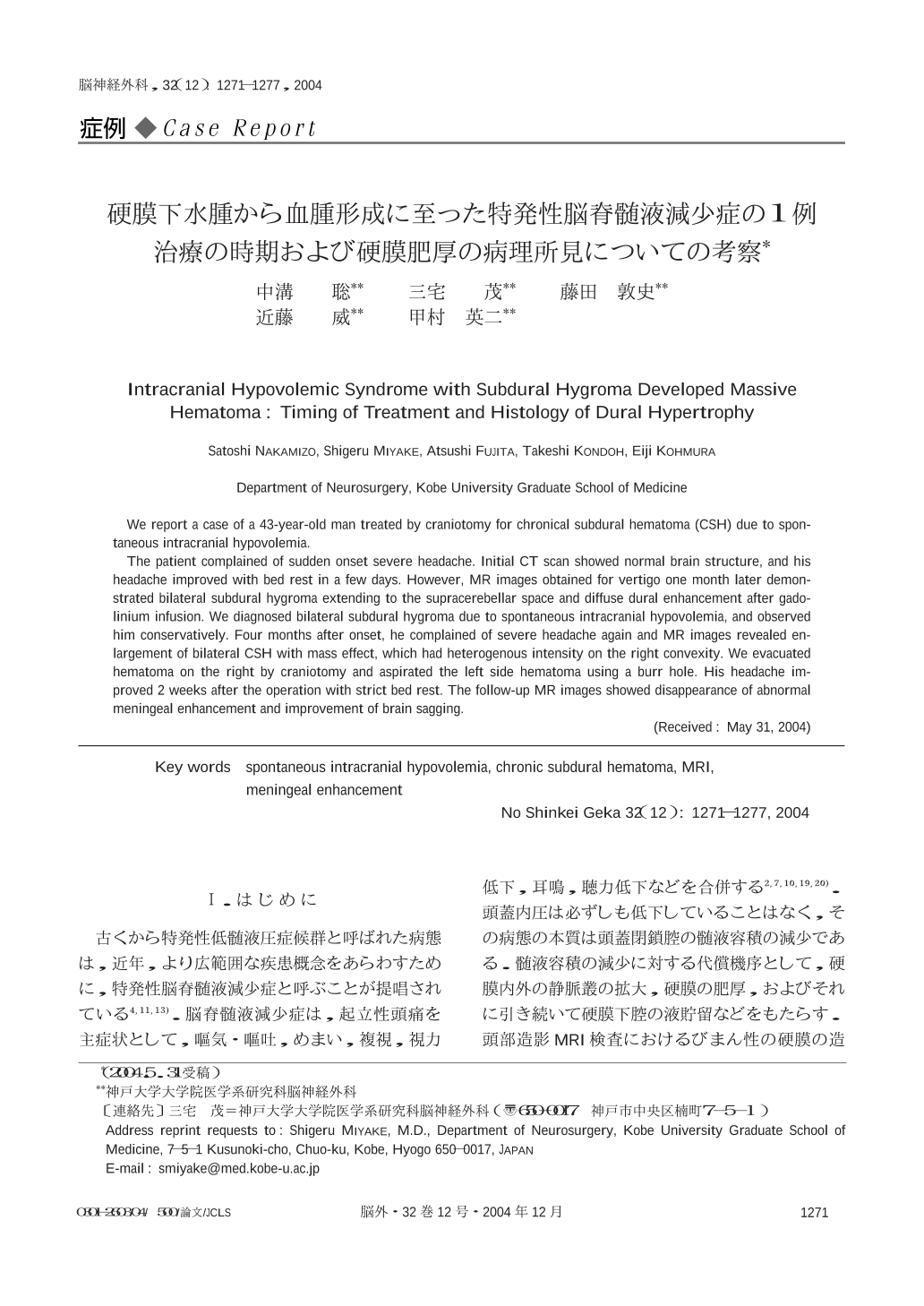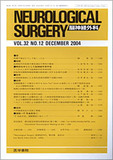Japanese
English
- 有料閲覧
- Abstract 文献概要
- 1ページ目 Look Inside
Ⅰ.はじめに
古くから特発性低髄液圧症候群と呼ばれた病態は,近年,より広範囲な疾患概念をあらわすために,特発性脳脊髄液減少症と呼ぶことが提唱されている4,11,13).脳脊髄液減少症は,起立性頭痛を主症状として,嘔気・嘔吐,めまい,複視,視力低下,耳鳴,聴力低下などを合併する2,7,10,19,20).頭蓋内圧は必ずしも低下していることはなく,その病態の本質は頭蓋閉鎖腔の髄液容積の減少である.髄液容積の減少に対する代償機序として,硬膜内外の静脈叢の拡大,硬膜の肥厚,およびそれに引き続いて硬膜下腔の液貯留などをもたらす.頭部造影MRI検査におけるびまん性の硬膜の造影所見が本症の特徴とされ,この所見は頭蓋内の髄液量と血液量は相反性に変化するというMonro-Kellieの法則に従って,髄液量の減少に伴い,頭蓋内の血液量が増加し,硬膜静脈腔が拡張することがその主体であるとされている9,12).その治療としては,ベッド上安静や経静脈的水分補給を併用した保存的加療から外科的な髄液漏の修復まで,様々なものが推奨されているが,無症候で経過するものに対してどれだけ積極的な治療をすべきかは,治療に伴う合併症の危険性もあり判断に迷うところである14,18).今回われわれは,テント上下に広汎な硬膜下水腫を来した脳脊髄液減少症と考えられる症例を経験した.無症状で経過したため経過を観察していたところ,後に亜急性硬膜下血腫となり開頭血腫除去術を余儀なくされた.また,MRI上,硬膜の造影所見は興味ある経時的変化を示した.症例を呈示するとともに反省点を含めて考察する.
We report a case of a 43-year-old man treated by craniotomy for chronical subdural hematoma (CSH) due to spontaneous intracranial hypovolemia.
The patient complained of sudden onset severe headache. Initial CT scan showed normal brain structure,and his headache improved with bed rest in a few days. However,MR images obtained for vertigo one month later demonstrated bilateral subdural hygroma extending to the supracerebellar space and diffuse dural enhancement after gadolinium infusion. We diagnosed bilateral subdural hygroma due to spontaneous intracranial hypovolemia,and observed him conservatively. Four months after onset,he complained of severe headache again and MR images revealed enlargement of bilateral CSH with mass effect,which had heterogenous intensity on the right convexity. We evacuated hematoma on the right by craniotomy and aspirated the left side hematoma using a burr hole. His headache improved 2 weeks after the operation with strict bed rest. The follow-up MR images showed disappearance of abnormal meningeal enhancement and improvement of brain sagging.

Copyright © 2004, Igaku-Shoin Ltd. All rights reserved.


